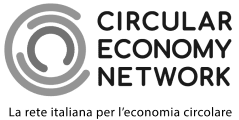 Of the recent trends in the world of design, the main one has undoubtedly been green, sustainable, eco-friendly design. What exactly is eco-design? It is a type of design based on a process and approach responsible especially from the points of view of the environment, ethics and the society. Eco-design is the invention and production of elements of design with a care for the environment and for society.
Of the recent trends in the world of design, the main one has undoubtedly been green, sustainable, eco-friendly design. What exactly is eco-design? It is a type of design based on a process and approach responsible especially from the points of view of the environment, ethics and the society. Eco-design is the invention and production of elements of design with a care for the environment and for society.
Eco-design therefore applies to all areas of design where solutions can be researched and developed to minimise environmental impact and offer society added value in terms of protection of the environment, and more besides, during the entire production process.
The principles of eco-design apply to the entire life-cycle of the product, with the aim of reducing its overall environmental impact: from the procurement and use of raw materials, which must be reusable, biodegradable, recyclable and non-toxic, and preferably sourced locally; to their processing as part of the production cycle, and distribution, which must be in compliance with the directive of the EU on eco-design (Directive 2009/125/EC) in terms of energy efficiency (reduced energy consumption during production) and low environmental impact. A product can also be defined as eco-friendly and sustainable if it can be consumed and then re-used: the life cycle of the product should be extended as long as possible, by means of potentially infinite recycling and re-use. Alternatively, the product should be 100% biodegradable for it to be fully reintegrated in the natural cycle.
The consumer should not be forgotten, however: for the product forms part of an ecosystem where the consumer also plays a key role. He or she should purchase and consume products in a conscious and responsible manner, and recycle and reuse these whenever possible. Companies must begin to consider the consumer as an actual agent of change, involved in the process and life cycle of the product, and who plays a part in ensuring that the product is effectively eco-friendly and sustainable.
If this point is ignored, the entire process could be said to have lost its meaning. Fortunately, however, consumers are changing the way they purchase and consume, experimenting with new ways of using goods and sharing consumption, as in the case of co-housing or car-sharing. Awareness of the issues of ecology and sustainability is growing, and companies must promote these new forms of production-consumption-living, actively involving the consumers.



